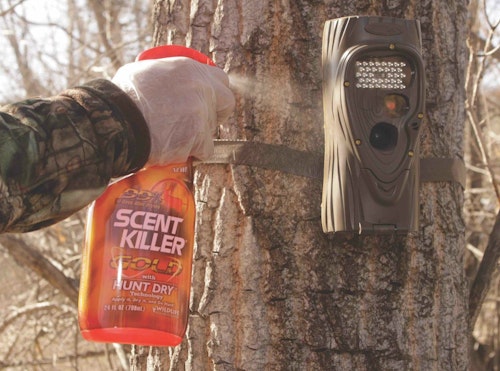Trail cameras are designed to blend into a timbered background and do so adorned in today’s popular camouflage patterns. Fooling a whitetail’s sight isn’t enough, however, you also must fool their nose.
Be careful not to leave behind a lingering trace of your human encroachment. Your initial placement could be the impetus for fewer images of big bucks. It’s no secret you can alter a mature buck’s travel preference simply be leaving a trace of human odor in an area. Keep these five tips in mind as you put up trail cameras in the home territory of a granddaddy whitetail.
- Don clothing that has been washed in odor-fighting detergent.
- Wear scent-free footwear and spray down liberally with odor-elimination products.
- Slip on latex gloves when handling cameras and straps at your site.
- Place cameras slightly off a trail and in an obscure location as opposed to trailside.
- After placing a camera, cover the lens and then spray with odor-elimination products.

Another option to minimize scent intrusion is to limit the checking of trail cameras. If you employ high-end trail cameras, your options include using large-capacity SD cards. These will store more images, allowing you to check cameras fewer times. You should also use high-quality lithium batteries to guarantee the unit keeps working for weeks or even months at a time.
Some deer hunters may wish to go wireless, too. Companies such as Moultrie, Bushnell, Spypoint, Spartan and others offer models that send images straight to your smartphone. The incoming notification of images can be annoying on a busy night, especially if a family of raccoons set up camp nearby, but you will rarely have to visit the camera.







